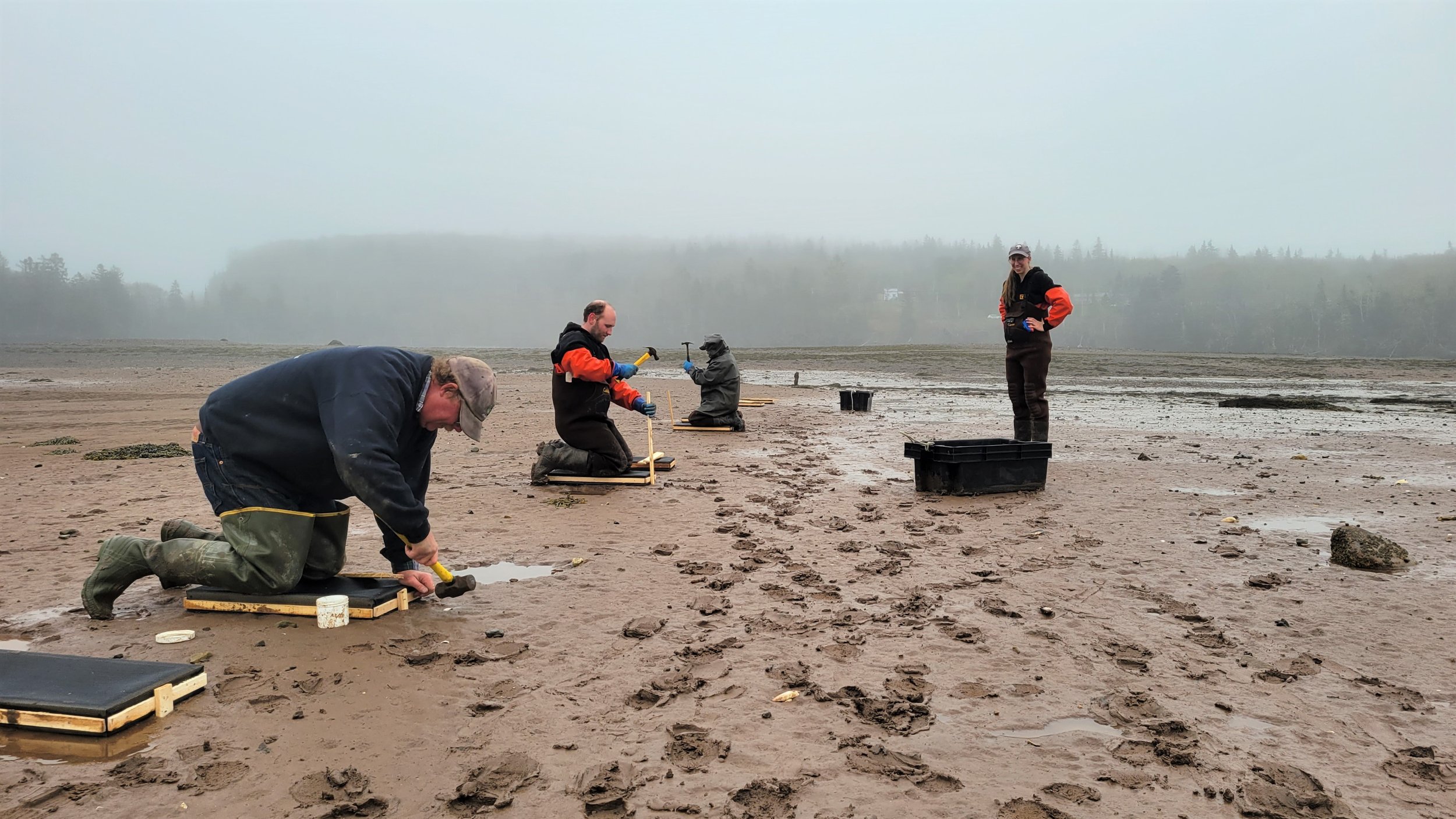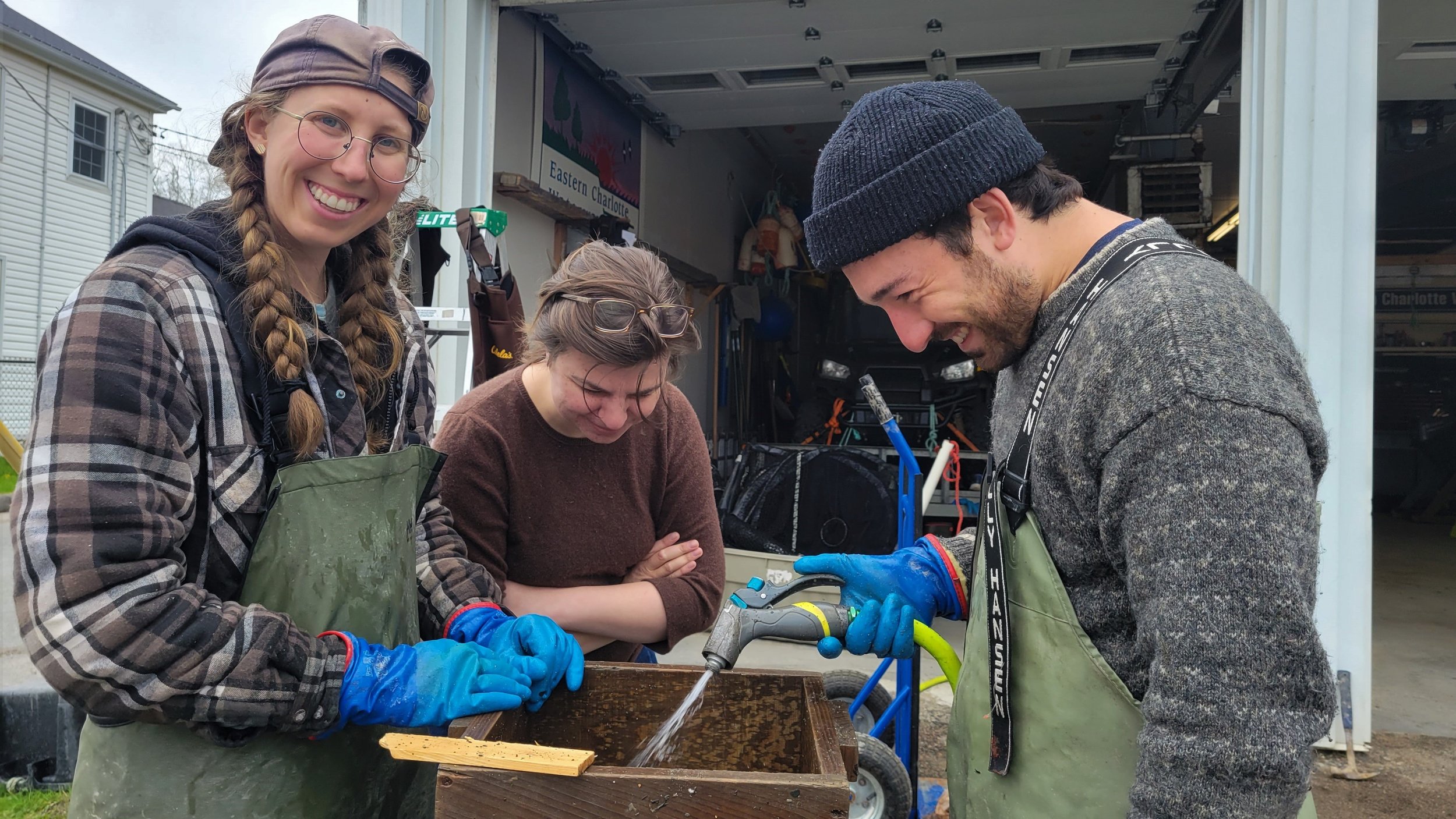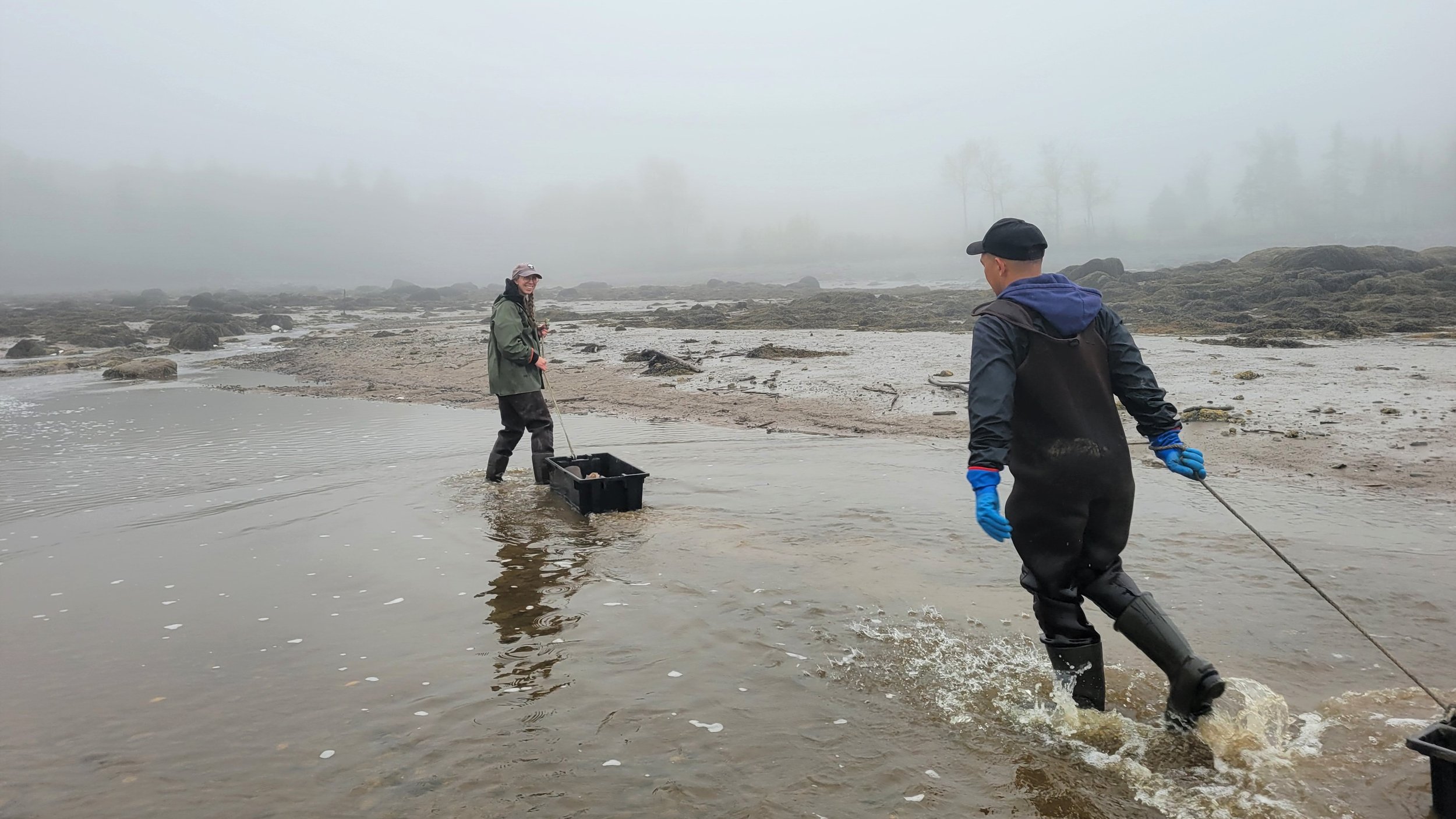Soft-shell clams
This project serves to understand the pressures faced by soft-shell clams (Mya arenaria) in southwest New Brunswick.
Soft-shell clams (Mya arenaria) are a significant cultural and economic component of North Eastern coastal communities like Maine and New Brunswick. As ocean water temperature warms, soft-shell clams face increased predation by invasive green crabs and milky ribbon worms. ECW has teamed up with the The Downeast Institute of Maine to continue research and predation mitigation to promote healthy soft-shell clam population growth.
Clam recruitment boxes, or Beal Boxes, were deployed at four intertidal zones in southwest New Brunswick before the clam spawning season in May 2023: two near Lepreau and two near St Andrews. These boxes protect clams from predation at their most vulnerable stage of development. Sediment samples were taken to establish a baseline abundance of soft-shell clams buried in the mudflats of the intertidal zone. The recruitment boxes are left here until November. At that time, sediment samples were taken again. We could then compare how many are found in the surrounding sediment with how many are in the boxes, protected from predation.
The results were clear: there are plenty of juvenile clams in our region, they just aren’t surviving through their first year of life. The reason for that was not apparent through this study.
We’re now working with the SWNB Clam Co-Op to collect young settling clams on key mudflats in the region, which we will then attempt to protect through their first year of life to see whether this will allow them the opportunity to grow into adulthood.
Thanks to the Gulf of Maine Initiative for funding this project.







